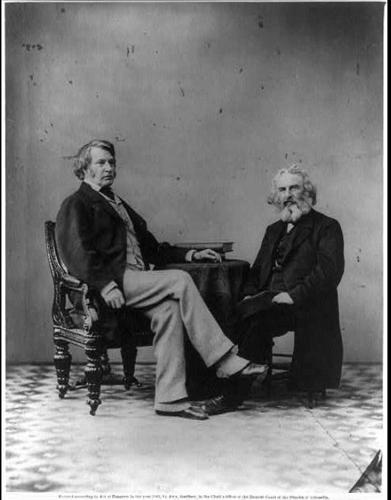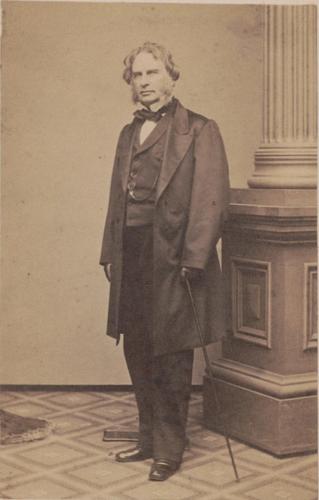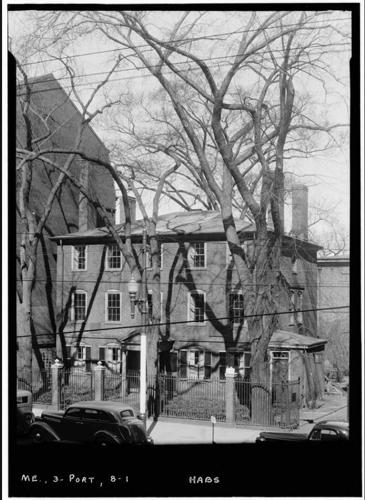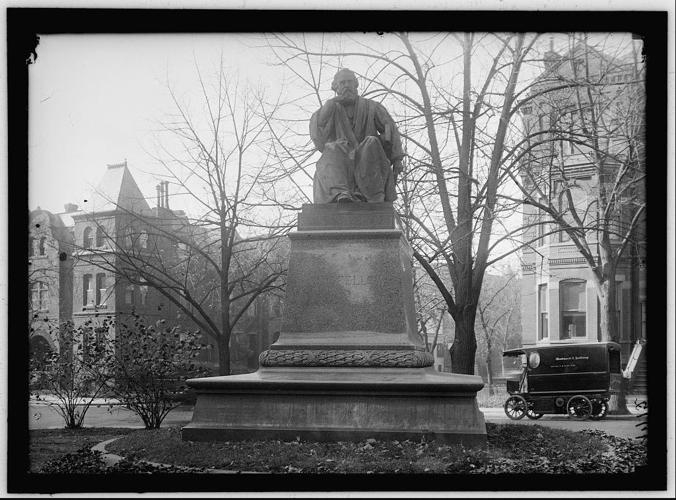Henry Wadsworth Longfellow’s famous last name graces an avenue, a lane and a drive in Tucson.
Longfellow was born in 1807 in present-day Portland, Maine, to a family that would soon include eight children. For his early studies he went to private schools, focusing on literature and languages. He also amused himself with ball games, kite-flying and skating.
At 13, Longfellow published his first poem, in the Portland Gazette, “The Battle of Lovell’s Pond,” about a battle between European-American colonists and Native Americans. It appeared on the newspaper’s front page.
At the young age of 14, he entered Bowdoin College. There he found a particular fondness for Washington Irving’s “The Sketch Book,” and the young bard saw his poetry published in national periodicals. He graduated in 1825 in a class that included author Nathaniel Hawthorne.
His fluency in translation led to an offer of a professorship in modern European languages at Bowdoin, as long as he would study in Europe prior to taking the post. His time in the Old World lasted from about 1826 to 1829, during which he likely met many famed authors.
Upon his return, he began his professorship, teaching Italian, French and Spanish and scribing critical essays. Over time he published six foreign language textbooks. He wed Mary Potter of Portland during this time.
His accomplishments at Bowdoin earned him the Smith Professorship of Modern Languages at Harvard College in Cambridge, Massachusetts, a post he accepted in 1834.
The following year, Longfellow and his then-pregnant wife sailed to Europe to improve his language skills. His wife died on the trip from complications following a miscarriage, which sent the newly widowed Longfellow into near-suicidal depression. He continued traveling, hoping to find solace far from his loss.
A chance encounter in the Swiss Alps put Longfellow in contact with the moneyed and influential Appleton family of Boston, and soon after he fell in love with the daughter, Fanny Appleton, but it was many years before she felt the same, and she spurned him at the time.
In 1836, he returned to Cambridge to teach and began writing the prose and poetry that would make him one of the best-known writers in the country’s history.
He penned “Hyperion,” an autobiographical novel that was essentially a thinly disguised account of his love for and immediate rejection by Appleton, which was published in 1839, as well as collections of poems.
In 1843, after several years of wooing and with a little help from his early fame, Appleton relented and married Longfellow. As a wedding gift from her father, the couple received the Craigie House (now called the Longfellow House–Washington’s Headquarters National Historic Site) in Cambridge, Massachusetts.
This would be where they raised their six children, Charles, Ernest, Fanny, Alice, Edith and Anne. It is also where his prominent circle of friends and acquaintances, notably Oliver Wendell Holmes (namesake of Tucson’s Holmes Street), Nathaniel Hawthorne (likely namesake of Tucson’s Hawthorne Street) and James Russell Lowell came to visit.
In the 1840s and 1850s, Longfellow continued to gain national and international acclaim for works such as “Poems on Slavery” in 1842.
By 1854, at the age of 47, he became one of America’s first self-sustaining writers and was able to stop working at Harvard. He instead invested his time and talents into producing prose and poetry.
Among these works were “The Song of Hiawatha” in 1855, “The Courtship of Miles Standish” in 1858 and “Tales of a Wayside Inn” in 1863, which included the American favorite, “Paul Revere’s Ride.”
In 1861, his second wife would die tragically when her dress caught fire. Longfellow’s futile attempt to squash the flames resulted in burns to his hands and face.
Some of his children were involved, in different ways, in the Civil War, even though he disapproved of their activities.
Much of his later efforts went into the translation of Dante’s “Divine Comedy” which was published in 1867. He was bestowed with many honors and received by many heads of state, including Queen Victoria.
His 70th birthday, in 1877, became a celebration on a national scale.
In 1878, he published a collection that included the poem “The Herons of Elmwood,” with Elmwood referring to the estate of friend and fellow poet James Russell Lowell. This poem is likely the namesake of Tucson’s Elmwood Street, which crosses paths with Longfellow Avenue and was named at the same time (although poet Thomas Bailey Aldrich also penned a poem titled “Elmwood”).
In 1882, the nation would mourn the loss of one of its favorite sons.
Both Longfellow Avenue and Elmwood Street were recorded together by John M. Roberts and Margaret Roberts in the early 1920s in their Country Club Heights subdivision, which also included street names like (Washington) Irving Avenue, (James Fenimore) Cooper Street, etc.
Note: The school now known as Peter Howell Elementary was called Longfellow School for the first semester of its existence, based on the street name that bordered it.








